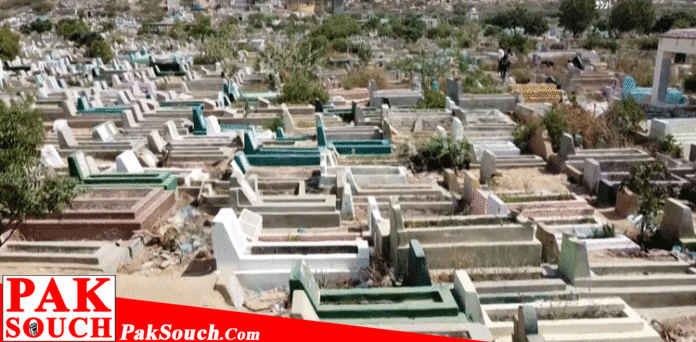Lahore — the historic City of Gardens and one of Pakistan’s most populous urban centers — is facing an unexpected yet deeply emotional crisis: the shortage of burial space. In a city known for its vibrancy and culture, there is now no room left for the dead. From Miānī Sahib to Township, and from Mominpura to Tajpura, nearly every major graveyard in Lahore has reached full capacity, forcing residents to adopt unconventional and unsettling methods of burial — multi-story graves.
The problem, though long in the making, has now become visibly alarming. In several cemeteries, graves are being constructed in multiple layers, with new burials taking place on top of older ones — sometimes two, three, or even four levels high. Gorkuns (grave diggers) admit that for decades, there has been little to no space for new graves, compelling them to reuse older burial sites.
This dire situation has transformed Lahore’s graveyards into congested, vertical burial grounds — a stark symbol of the city’s unchecked population growth, urban sprawl, and inadequate planning.
Residents visiting these overcrowded cemeteries express both sorrow and anxiety. One man, standing beside the graves of his late parents in Township Cemetery, voiced his distress: “We buried our elders here with our own hands. But today, we realize there’s no place left for us.” His concern reflects the growing sentiment among Lahoris who now fear that, even in death, they may not find peace or a final resting place.
Cemetery caretakers confirm that the crisis is citywide. Miānī Sahib Cemetery, one of Lahore’s oldest and largest burial grounds, has been full for years. Similar stories come from Mominpura, Firdosia, Tajpura, and Mian Mir. With no new land allocated for graveyards, people are forced to reopen ancestral graves for fresh burials — a practice both emotionally painful and religiously sensitive.
Some caretakers reveal that “vertical burials” are becoming increasingly common — a desperate adaptation to manage space. In certain graveyards, cemented platforms are built over existing graves, allowing new bodies to be placed above the old. While not formally sanctioned, such practices have become a grim necessity.
Urban planners and sociologists argue that this situation highlights a severe lack of foresight in city development. Lahore’s population has surpassed 12 million, yet no large new graveyard has been systematically planned in recent years. Expanding housing colonies, commercial projects, and road infrastructure have consumed almost all available land, leaving little room for essential public needs like cemeteries.
Environmental experts also raise concerns about the impact of overcrowded burial sites — from groundwater contamination to hygiene issues, especially in areas where graves are constructed too close to residential zones.
The emotional toll, however, remains the most striking. The poetic lament — “Mar ke bhi chain na paaya, to kahan jaayenge?” (“Even in death we find no peace — where shall we go now?”) — once written as a reflection on spiritual unrest, now seems hauntingly literal for the people of Lahore.
In response, citizens have appealed to Punjab Chief Minister Maryam Nawaz to urgently designate new land for cemeteries within and around Lahore. They stress that burial space is not just a planning issue but a matter of dignity and faith.
Experts suggest that a sustainable solution could include planned satellite graveyards on the outskirts of the city, along with improved record-keeping, zoning, and maintenance of existing burial grounds. Without immediate action, Lahore’s burial crisis may soon become a humanitarian one — a situation where the living struggle to find peace for their dead in the city they call home.










